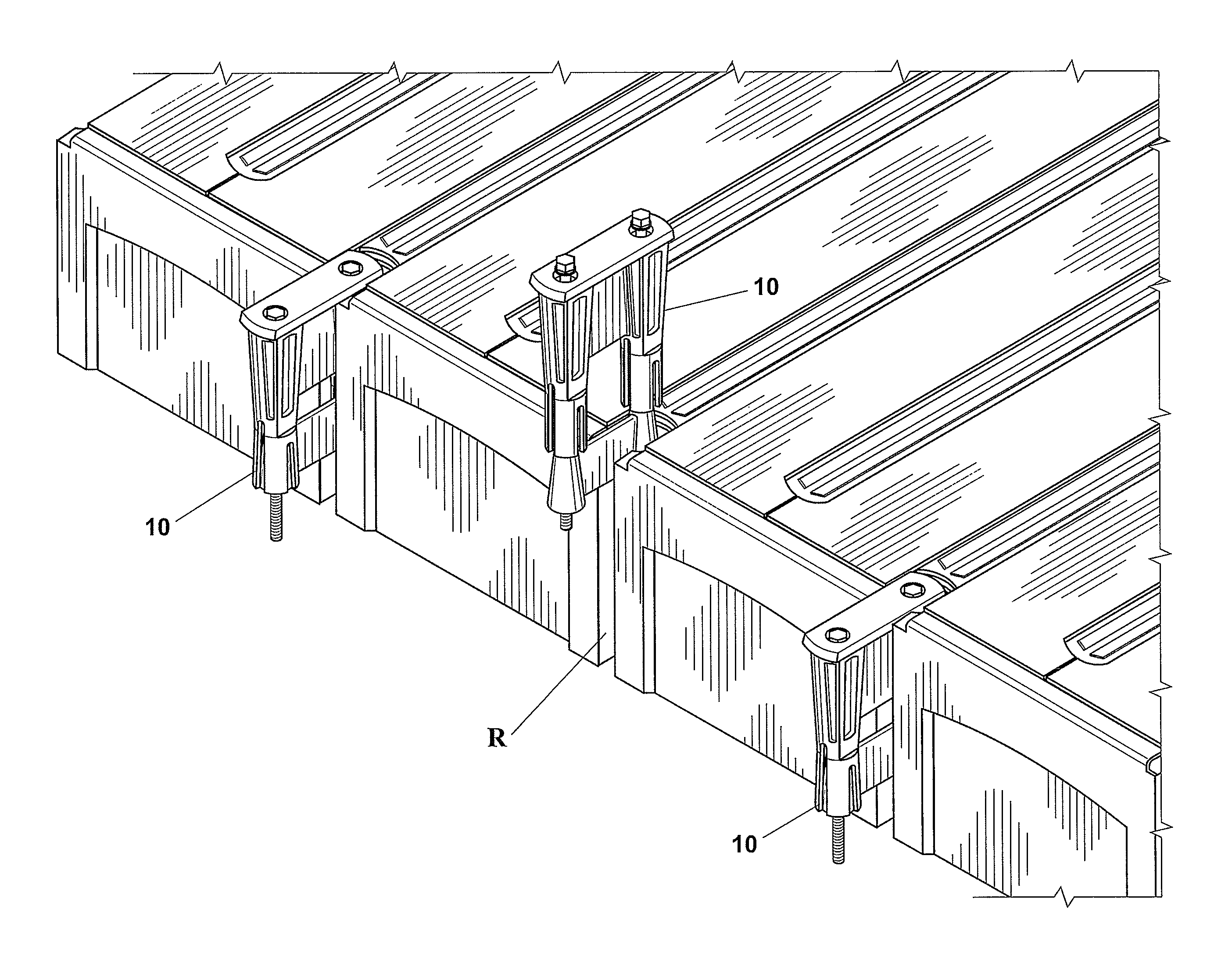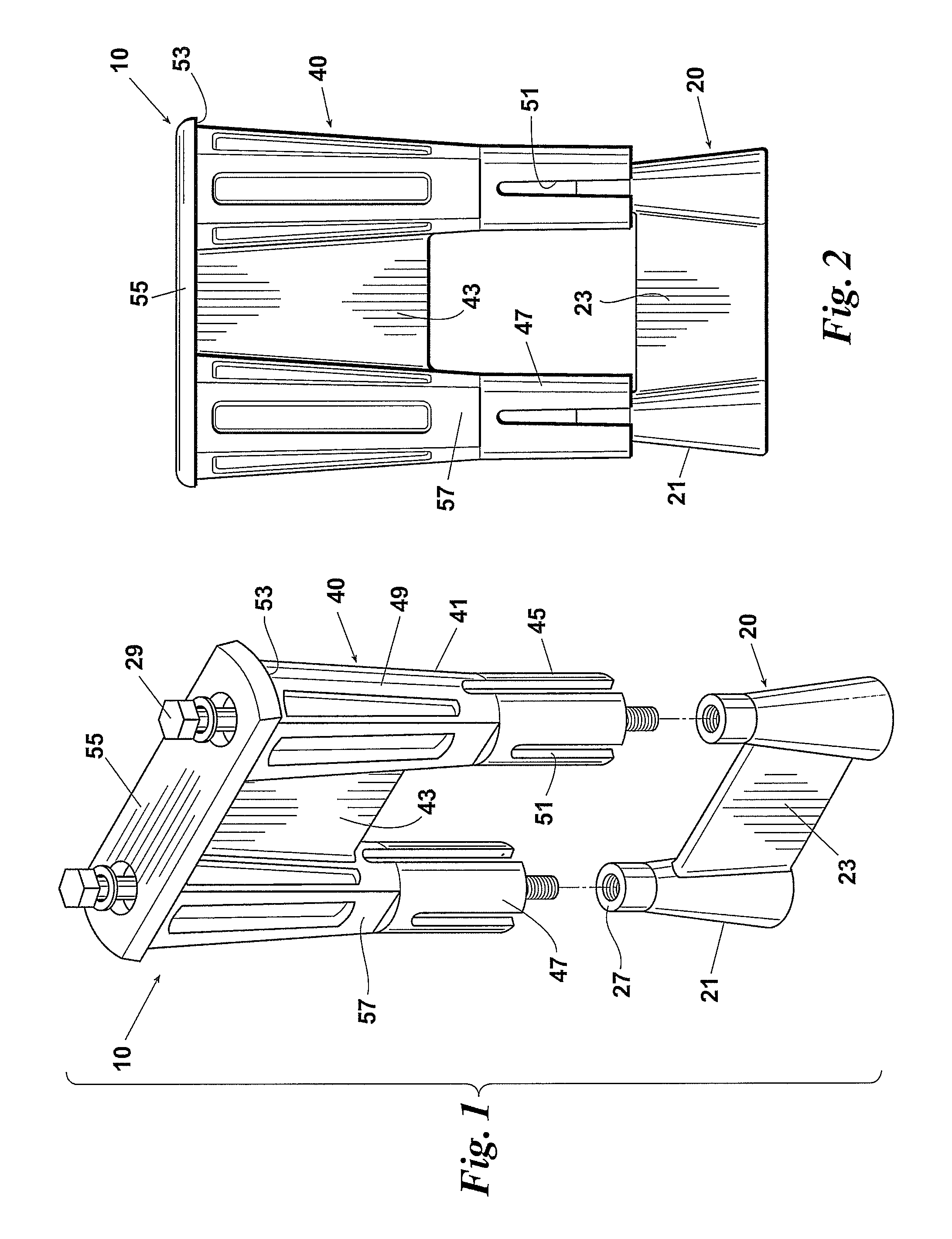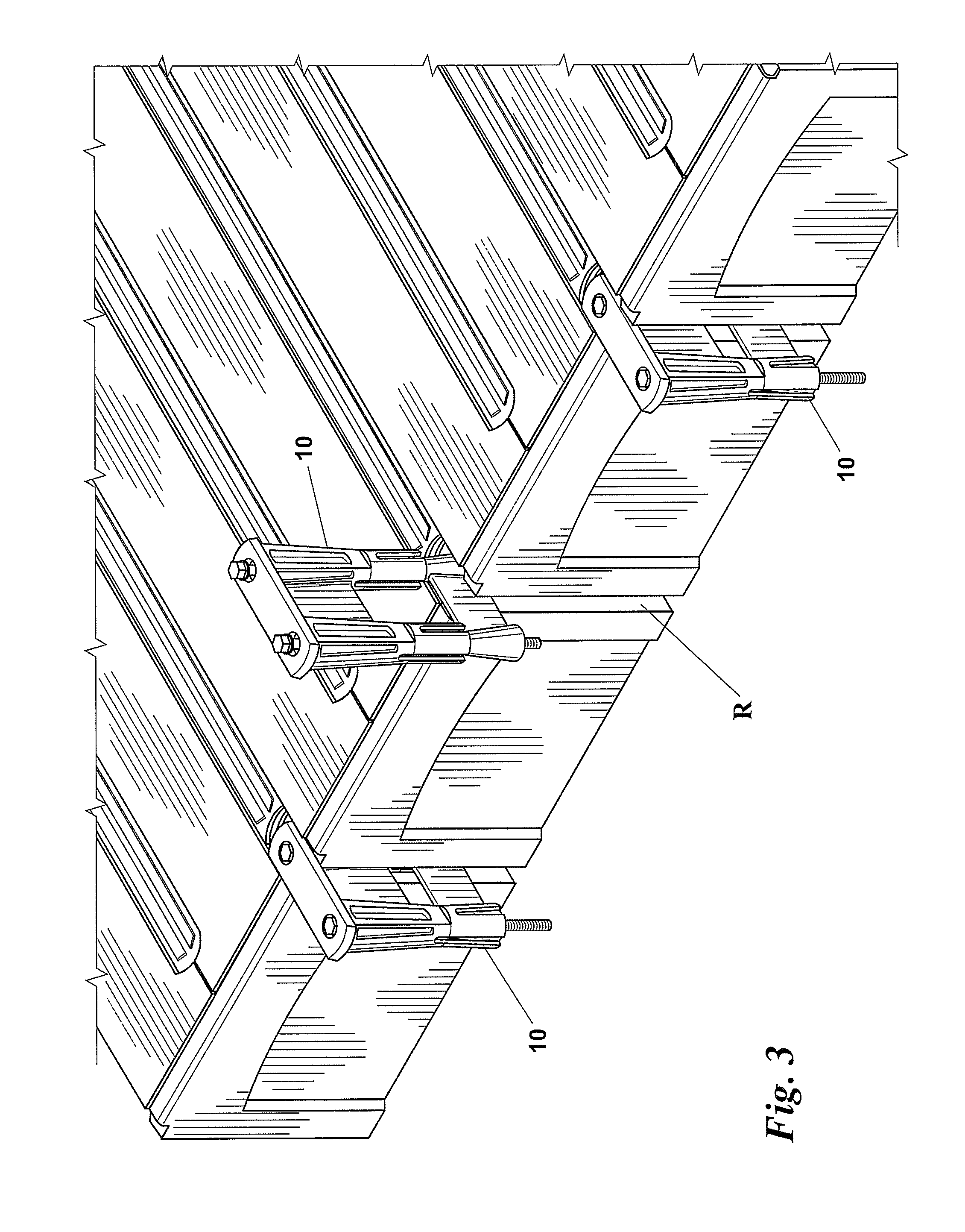Top-lock connector for a floating dock
a toplock connector and floating dock technology, applied in the direction of rod connection, transportation and packaging, manufacturing tools, etc., can solve the problems of the connector's fastening means and the breakage of the docking member, and the continued exposure of the water
- Summary
- Abstract
- Description
- Claims
- Application Information
AI Technical Summary
Benefits of technology
Problems solved by technology
Method used
Image
Examples
Embodiment Construction
[0010]A top-lock connector 10 made according to this invention is an expandable two-part connector that is received by vertical receiver slots R in opposing floating dock members D and spans between about the top end and midline of the dock members D. The first half or lower male portion 20 of the top-lock connector includes a pair of frusto-conical shaped cones 21 connected by a narrower center section or spacer 23. Each cone 21 has a female threaded receiver 25 located at its upper end 27 for receiving a bolt or rod 29. The bolt or rod 29 may be a plastic or composite material bolt or rod. As a user tightens the rod 29, the pair of frusto-conical shaped cones 21 are drawn upward and into the second half or upper female portion 40 of the top-lock connector 10.
[0011]The upper female portion 40 of the top-lock connector 10 includes a pair of ribbed frusto-conical shaped cones 41 which reside above a slotted cylinder 45. Similar to the cones 21 of the lower male portion 20, the ribbed...
PUM
 Login to View More
Login to View More Abstract
Description
Claims
Application Information
 Login to View More
Login to View More - R&D
- Intellectual Property
- Life Sciences
- Materials
- Tech Scout
- Unparalleled Data Quality
- Higher Quality Content
- 60% Fewer Hallucinations
Browse by: Latest US Patents, China's latest patents, Technical Efficacy Thesaurus, Application Domain, Technology Topic, Popular Technical Reports.
© 2025 PatSnap. All rights reserved.Legal|Privacy policy|Modern Slavery Act Transparency Statement|Sitemap|About US| Contact US: help@patsnap.com



